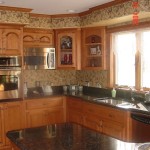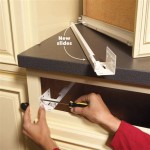Understanding Kitchen Knife Sharpening Stone Grit
Maintaining sharp kitchen knives is crucial for efficient and safe food preparation. A dull knife requires more force, increasing the risk of slips and injuries. Furthermore, a clean cut from a sharp knife preserves the texture and flavor of ingredients better than a ragged tear from a dull blade. One of the most effective methods for achieving and maintaining a razor-sharp edge is through the use of sharpening stones, also known as whetstones or water stones. The effectiveness of a sharpening stone is directly tied to its grit, which determines the coarseness of the abrasive material and, consequently, the rate at which it removes steel.
Grit numbers are used to indicate the particle size of the abrasive material used in the stone. This number directly correlates to the size of the scratches left on the blade’s surface during sharpening. A lower grit number signifies a coarser stone with larger abrasive particles, ideal for repairing damaged edges, removing chips, and reshaping the blade. Conversely, a higher grit number indicates a finer stone with smaller abrasive particles, used for refining the edge and achieving a polished, razor-sharp finish. Understanding the role of different grit levels is essential for selecting the appropriate stones and executing proper sharpening techniques.
The Relationship Between Grit and Sharpening Stage
The sharpening process typically involves multiple stages, each requiring a specific grit range. The initial stage focuses on addressing significant imperfections and establishing a new edge. This is accomplished using coarser stones with grit numbers ranging from 120 to 400. These stones aggressively remove steel, allowing for the removal of chips, broken tips, and significant dullness along the blade's edge. When using these grits, it is paramount to maintain a consistent angle and apply even pressure to prevent uneven wear on the blade. The goal is to create a clean, uniform bevel that serves as the foundation for subsequent sharpening stages.
The second stage involves refining the edge and removing the scratches created by the coarser stone. This is typically achieved using medium grit stones, ranging from 800 to 2000. These stones remove less material than coarser stones, focusing on smoothing the bevel and creating a sharper, more refined edge. This stage is crucial for transitioning from a rough, functional edge to one that is capable of making cleaner, more precise cuts. Consistent technique is still important, but the emphasis shifts to achieving a uniform polish across the entire bevel.
The final stage involves polishing the edge and achieving the ultimate level of sharpness. This is accomplished using fine grit stones, ranging from 3000 to 8000 and beyond. These stones remove very little material, focusing instead on aligning the microscopic teeth of the blade's edge and creating a highly polished surface. The result is an incredibly sharp edge that glides through materials with minimal resistance. Some users even employ stropping compounds on leather or fabric after using the finest stones to further refine the edge and remove any remaining burrs.
Types of Sharpening Stones and Their Grit Options
Sharpening stones are available in various materials, each with its own characteristics and ideal applications. The most common types include water stones, oil stones, and ceramic stones. Water stones are known for their relatively soft composition and rapid cutting action. They require the use of water as a lubricant to prevent clogging and facilitate the removal of steel particles. Water stones are available in a wide range of grits, making them suitable for all stages of sharpening. Due to their softer nature, they tend to wear down more quickly than other types of stones and require periodic flattening.
Oil stones, typically made of Arkansas stone or other natural or synthetic materials, require the use of oil as a lubricant. Oil stones are generally harder and more durable than water stones, but they also cut more slowly. They are less prone to clogging, but the oil can attract dust and debris, requiring regular cleaning. Oil stones are available in a narrower range of grits compared to water stones, typically used for medium to fine sharpening and honing. The choice between water stones and oil stones often comes down to personal preference and the type of steel being sharpened.
Ceramic stones are made of synthetic materials and offer a combination of hardness, durability, and consistent grit. They can be used with water or oil as a lubricant, depending on the manufacturer's recommendations. Ceramic stones are known for their ability to maintain their shape and flatness over extended use. They are available in a wide range of grits, making them suitable for both coarse and fine sharpening. Ceramic stones are a versatile option for users seeking a durable and reliable sharpening solution.
Selecting the Right Grit for Specific Knife Types
The specific grit requirements for sharpening a kitchen knife can vary depending on the type of knife, the type of steel used in the blade, and the desired level of sharpness. For example, a heavy-duty chef's knife used for chopping bones or tough vegetables may benefit from a slightly coarser initial grit to remove any damage and establish a durable edge. Conversely, a delicate paring knife used for intricate tasks may require a finer initial grit to prevent over-sharpening and maintain its precision.
Knives made from harder steels, such as those found in Japanese-style knives, can generally withstand finer grits and higher levels of polishing. These knives often benefit from the use of very fine stones (6000 grit and above) to achieve a razor-sharp, highly refined edge. Knives made from softer steels may not be able to hold such a refined edge for as long and may perform better with a slightly coarser final grit. It is important to consider the steel's hardness when selecting the appropriate grit range for sharpening.
Ultimately, the ideal grit selection is a matter of personal preference and experience. It is recommended to experiment with different grit combinations to determine what works best for individual knives and sharpening techniques. Starting with a coarser grit to repair any damage, progressing through medium grits to refine the edge, and finishing with a fine grit to polish the edge is a common and effective approach. Regular maintenance with a honing steel between sharpening sessions can help to prolong the sharpness of the blade and reduce the frequency of needing to use sharpening stones.
Furthermore, it’s important to note that sharpening is a skill that requires practice. Even with the correct grits of sharpening stones, a poor sharpening technique can damage the knife or fail to achieve a desirable result. It is advised to research and practice proper sharpening techniques before attempting to sharpen expensive knives. Consider starting with less valuable knives to develop a feel for the process and refine your technique. Many resources are available online, including videos and articles, that demonstrate proper sharpening techniques.
The longevity of a sharpening stone depends on the frequency of use and the type of steel being sharpened. Softer stones will wear down faster than harder stones, and sharpening harder steels will require more frequent flattening of the stone. Proper storage of sharpening stones is also crucial. Stones should be stored in a dry, clean environment to prevent contamination and damage. Water stones should be allowed to dry completely after use to prevent mold and mildew growth. Oil stones should be cleaned regularly with a degreasing agent to remove accumulated oil and debris.

Knife Supplies Blog 5 A Comprehensive Guide To Sharpening Stone Materials And Grits

1000 6000 Grit Whetstone Sharpening Stone Seido Knives

How To Choose A Sharpening Stone For Kitchen Knives

Choice 12 Coarse Medium Grit Carbonized Silicon Knife Sharpening Stone

Top 5 Sharpening Questions

1000 6000 Grit Double Sided Knife Sharpening Stone China Whetstone Made In Com
:max_bytes(150000):strip_icc()/__opt__aboutcom__coeus__resources__content_migration__serious_eats__seriouseats.com__images__20100423-sharpening20-2004-aba6e6fa129844a7a106fa006eb98c3d.jpg?strip=all)
The Best Knife Sharpeners Of 2024 Tested Reviewed

1000 6000 Grit Whetstone Sharpening Stone Seido Knives

Mercer Culinary M15951 Combination Sharpening Stone 400 1000 Grit

A Guide To Choosing Whetstone Kitchenware Blog Com Au
Related Posts








